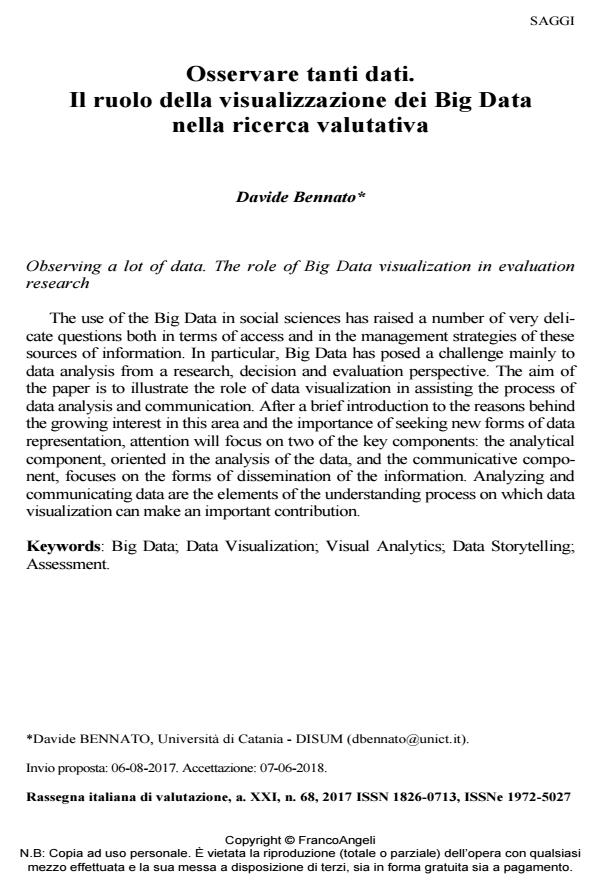Observing a lot of data. The role of Big Data visualization in evaluation research
Journal title RIV Rassegna Italiana di Valutazione
Author/s Davide Bennato
Publishing Year 2018 Issue 2017/68
Language Italian Pages 21 P. 63-83 File size 698 KB
DOI 10.3280/RIV2017-068005
DOI is like a bar code for intellectual property: to have more infomation
click here
Below, you can see the article first page
If you want to buy this article in PDF format, you can do it, following the instructions to buy download credits

FrancoAngeli is member of Publishers International Linking Association, Inc (PILA), a not-for-profit association which run the CrossRef service enabling links to and from online scholarly content.
The use of the Big Data in social sciences has raised a number of very delicate questions both in terms of access and in the management strategies of these sources of information. In particular, Big Data has posed a challenge mainly to data analysis from a research, decision and evaluation perspective. The aim of the paper is to illustrate the role of data visualization in assisting the process of data analysis and communication. After a brief introduction to the reasons behind the growing interest in this area and the importance of seeking new forms of data representation, attention will focus on two of the key components: the analytical component, oriented in the analysis of the data, and the communicative component, focuses on the forms of dissemination of the information. Analyzing and communicating data are the elements of the understanding process on which data visualization can make an important contribution.
Keywords: Big Data; Data Visualization; Visual Analytics; Data Storytelling; Assessment.
Davide Bennato, Osservare tanti dati. Il ruolo della visualizzazione dei Big Data nella ricerca valutativa in "RIV Rassegna Italiana di Valutazione" 68/2017, pp 63-83, DOI: 10.3280/RIV2017-068005